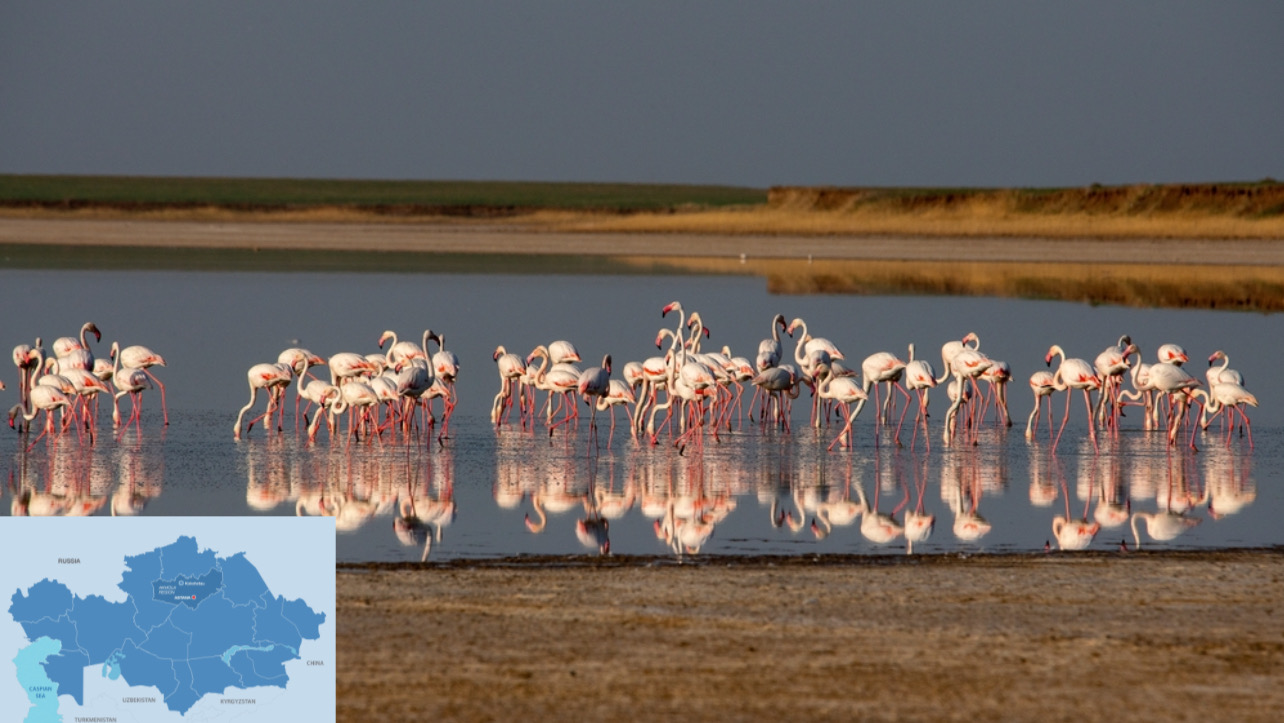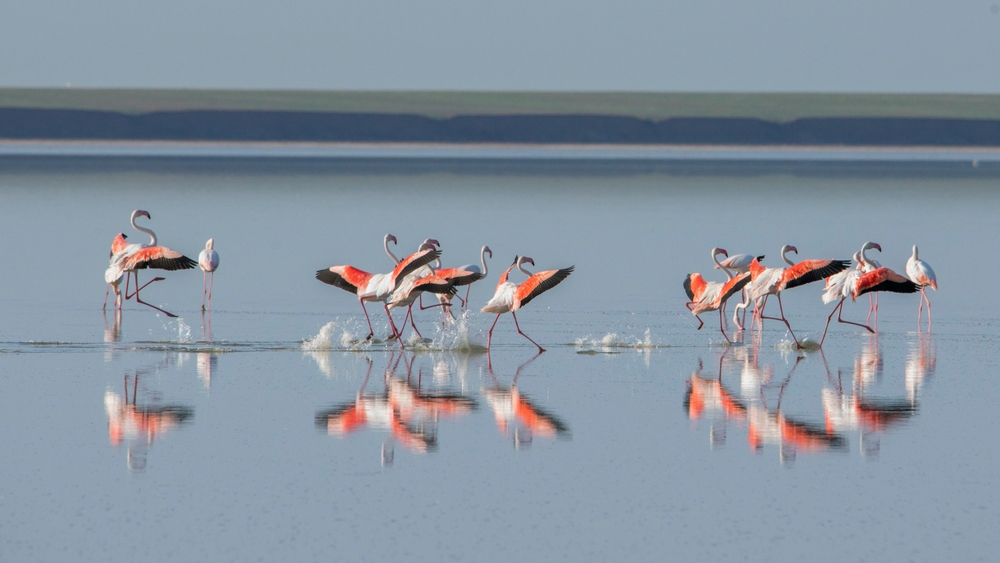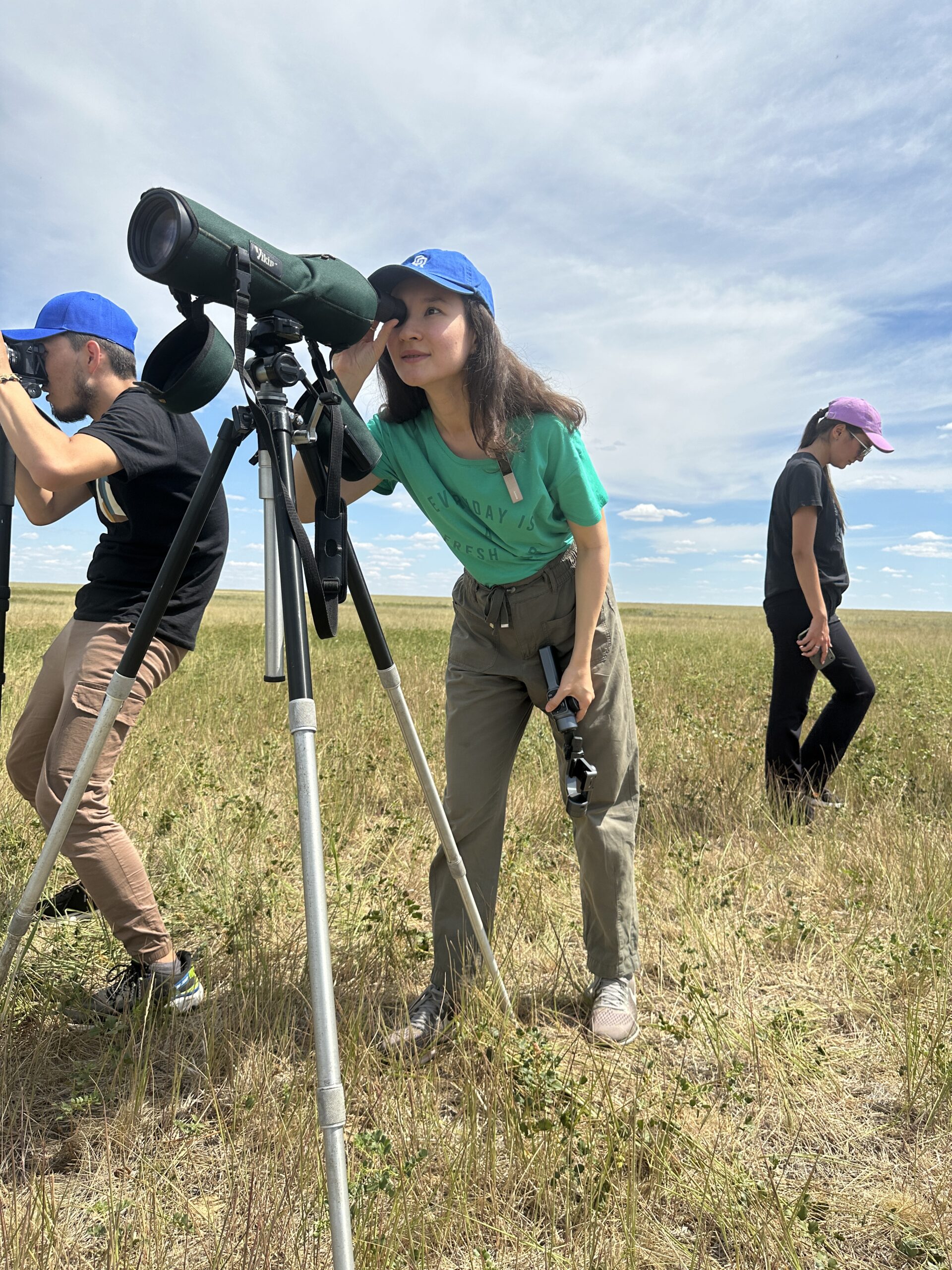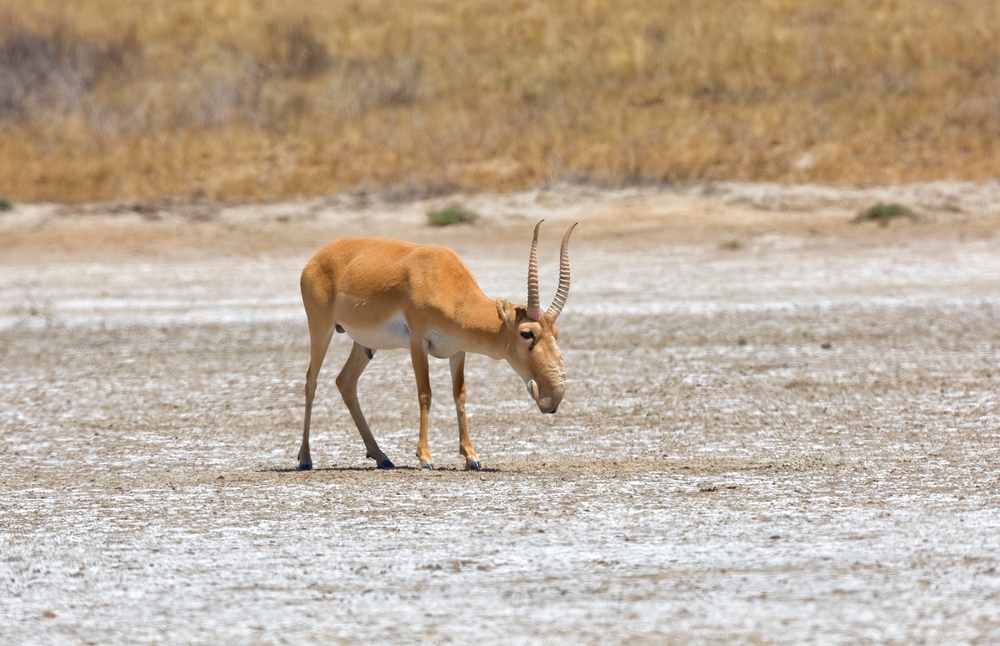AKMOLA REGION – For birdwatchers and nature-lovers of all ages, the Korgalzhyn state nature reserve allows visitors to get close to a remarkable array of migratory birds and saiga antelopes without disturbing them.

Flamingos are a trademark of the Korgalzhyn state nature reserve. Photo credit: Shutterstock. Click to see the map in full size. The map is designed by The Astana Times.
A comfortable 160-kilometer drive from Astana took a group of media representatives on tour on July 25 to the vast steppes and shallow salt-water lakes of Korgalzhyn reserve as part of the Baitaq Zher (Vast Earth) project by the Eurasia Foundation of Central Asia in partnership with Chevron.
About the reserve
Passing through a security checkpoint, visitors were greeted by Alexandr Fedulin, deputy director for science of the Korgalzhyn reserve, to walk the group through the reserve’s history.

Korgalzhyn state nature reserve was formed in 1968 and in 2008 became one of the clusters of the UNESCO World Heritage site “Saryarka – Steppes and Lakes of Northern Kazakhstan,” said Alexandr Fedulin, deputy director for science of the reserve. Photo credit: Aibarshyn Akhmetkali/The Astana Times
“Our reserve was formed in 1968. In 2008, the territory of the reserve increased almost twofold. Before it occupied only the territory of the Akmola Region, but today the Karagandy Region has been added as well,” said Fedulin, who has been working at the reserve since 2000.
Stretched over 500,000 hectares, Korgalzhyn is one of the most important wetlands in central Kazakhstan, breeding home to ordinary flamingos.
“In the center of the reserve, there is Tengiz Lake. On the eastern shore of the lake, there are many small islands, which is the northernmost site of flamingo colonies in the world. They come here and nest,” said Fedulin.

Korgalzhyn’s vast steppes and wetland areas are of an outstanding importance for migratory waterbirds. Photo credit: Aibarshyn Akhmetkali/The Astana Times
The fragile ecosystem of the Korgalzhyn reserve hosts outstanding biodiversity and plays a crucial role in the migratory routes of many bird species.
The reserve is home to many endangered species, including 45 species of mammals, eight of which are listed in the International Union for Conservation of Nature (IUCN), 365 species of birds, of which 42 are listed in Kazakhstan’s Red Book (lists of rare and endangered species), 15 fish species and four reptiles.
“The large distance from settlements was chosen to exclude anthropogenic factor – human influence on nature. According to the legislation, all processes on the territory of the reserve should be natural and exclude the factor of human interference,” said Fedulin.
Fedulin said several birds spotted on the territory could be classed as a vagrant by ornithologists, meaning they were found outside of their normal range.
“Just recently, we found a bird in our region whose habitat is the Philippines and Bali. It is an ashy drongo (Dicrurus leucophaeus). Usually, their northernmost fly-in is Afghanistan. In total, there are 14 such birds in the reserve,” said Fedulin.
While Fedulin feels it is premature to speculate on the cause of such migration, climate change and global warming appear to hold clues.
Flamingos – a trademark of the reserve
The sight of hundreds of flamingos flocking together to create a light pink cloud is one of the wonders of the reserve and the main attraction for tourists and bird watchers alike.

Ordinary flamingos of Korgalzhyn reserve have light pink feathers that turn bright pink and black towards the wings. Photo credit: Shutterstock
With light pink feathers that turn bright pink and black towards the wings, slender neck and legs, it has one of the most elegant bird silhouettes on the planet.
There was an air of excitement among the journalists as they approached one of the most gregarious species producing a chorus of “oohs” and “aahs” from afar.
“The flamingo is the main trademark of the reserve. We have the ordinary flamingo although there are many other species around the world. There is even an orange flamingo and a flamingo with blue wings. Our flamingo is the largest in size,” said Artem Yanushevsky, a theriogenologist (mammal specialist) of the reserve, on the way to the lake.

The Astana Times correspondent Aibarshyn Akhmetkali observes the elegant flamingos through binoculars from afar. Photo credit: The Astana Times
The bird is usually associated with tropic climates, but they are very resistant to cold, said Yanushevsky.
“In the world, it is commonly believed that the flamingo is a tropical, exotic bird. In fact, the flamingo can tolerate quite harsh cold conditions. Let’s say they come to us in early April. There are still frosts here at that time and they usually leave at the end of October,” he said.
“Korgalzhyn is the northernmost nesting colony of flamingos. They do not nest further north in the world at all,” he added.
The birds arrive in Korgalzhyn from India, from the Middle East, and some are thought to come from as far as North Africa.
Their attraction to salt lakes brings them to the reserve. “In salt lakes, even at 2-3 degrees below zero, the water does not freeze. And they can walk around in that water all day long. They fly away when the water freezes,” said Yanushevsky.
The salt levels in the shallow waters of the reserve are just right for the prolific growth of the Artemia salina brine shrimps that flamingos feed on. The shrimps are also the reason for their distinctive pink coloration because of the presence of carotenoid pigments.
Flamingos are complex social structures, said Yanushevsky. “When they have already hatched their chicks, they make their own daycare center. This means that up to 10 birds stay to look after the chicks while the other parents fly to get water and food,” he added.
The reserve’s other inhabitants
In the steppes of Korgalzhyn, the silence is so complete that it is easy to forget one is only a few hour’s drive from the capital.

Korgalzhyn is also home to once-endangered saiga antelopes. Photo credit: Shutterstock
In such mesmeric tranquillity, the herd of saiga antelopes graze in the wild. The species that were once at the edge of extinction due to hunting now reside in the depths of a nature reserve.
Finding saigas at the edge of a protected area is unusual but not unprecedented. Media representatives were lucky to glimpse Central Asia’s most symbolic animal before it gracefully vanished behind the hills.
Another mesmerizing phenomenon one could witness at Korgalzhyn reserve during autumn is the catching of fish by pelicans and cormorants.
“Pelicans control only up to one meter from the water surface when hunting, as they cannot dive. But cormorants dive to a greater depth and while diving bubbles are released from their feathers, a kind of bubble fence is formed,” said Fedulin.
“The fish is afraid of such water ‘wall’, it is also an obstacle for it, so it concentrates in one place. Gradually the circle closes and the fish gather in the center. The fish starts to jump into the air and at this time become prey to pelicans or gulls,” he added, describing a fantastic synergy between birds in the wild.
Birdwatching among enthusiasts and ornithologists is also popular.
“Their numbers are increasing every year. They come from Finland, England, Germany and Eastern European countries,” said Fedulin.

